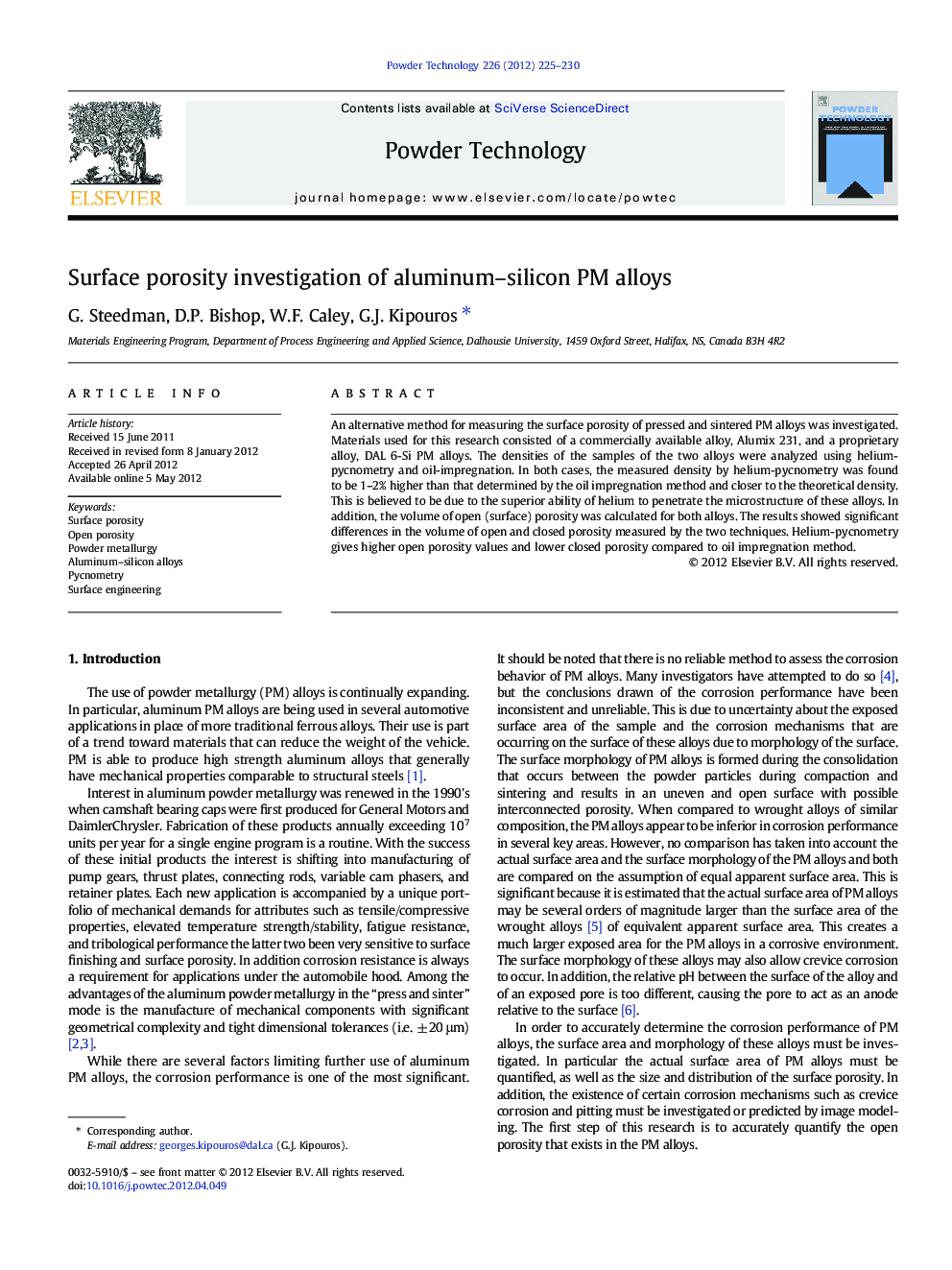| Article ID | Journal | Published Year | Pages | File Type |
|---|---|---|---|---|
| 237110 | Powder Technology | 2012 | 6 Pages |
An alternative method for measuring the surface porosity of pressed and sintered PM alloys was investigated. Materials used for this research consisted of a commercially available alloy, Alumix 231, and a proprietary alloy, DAL 6-Si PM alloys. The densities of the samples of the two alloys were analyzed using helium-pycnometry and oil-impregnation. In both cases, the measured density by helium-pycnometry was found to be 1–2% higher than that determined by the oil impregnation method and closer to the theoretical density. This is believed to be due to the superior ability of helium to penetrate the microstructure of these alloys. In addition, the volume of open (surface) porosity was calculated for both alloys. The results showed significant differences in the volume of open and closed porosity measured by the two techniques. Helium-pycnometry gives higher open porosity values and lower closed porosity compared to oil impregnation method.
Graphical abstractFigure optionsDownload full-size imageDownload as PowerPoint slideHighlights► Helium pycnometry can determine surface porosity of PM aluminum silicon samples. ► Pycnometry is a simple, fast, accurate technique for surface characterization. ► Helium pycnometry is consistent, easy to apply and does not destroy the sample.
